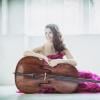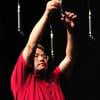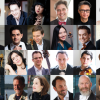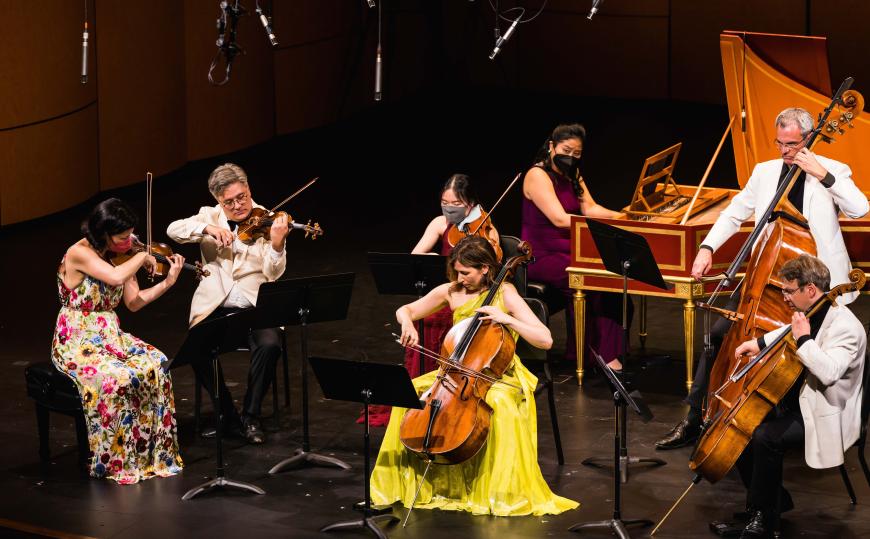
Music@Menlo is putting on its first full summer festival since 2019 this year, with the theme of “Haydn Connections.” The opening mainstage concert was presented on Saturday, July 16, at the Spieker Center for the Arts on the Menlo School campus in Atherton. It paired a secular cantata and a solo concerto by Franz Joseph Haydn with works of the same genres by composers of the two previous generations, both named Bach.
Haydn’s cantata Arianna a Naxos is a late-period work from about 1790. Depicting a Greek myth in the Italian language, it features two recitative-aria pairs for a single vocalist. Haydn wrote it to be accompanied by keyboard, but this performance featured an arrangement by Peter Jaffe for string quintet and harpsichord, which built up the accompaniment and suited the composition well.
Usually I’ve heard this piece performed by a contralto. Here, it was sung by mezzo-soprano Sasha Cooke, this notable singer’s welcome return after a long absence from the Menlo performing company. Cooke’s lighter voice gave her plenty of room for characterization and emotional expression, which she put forth in face and gestures as well as in voice. As Ariadne gradually realizes that her lover Theseus has abandoned her on the island of Naxos, she moves from longing through puzzlement and despair to anger. This was all elegantly portrayed by Cooke and the instrumentalists in the courtly manner of similarly emotional scenes in Handel’s operas.
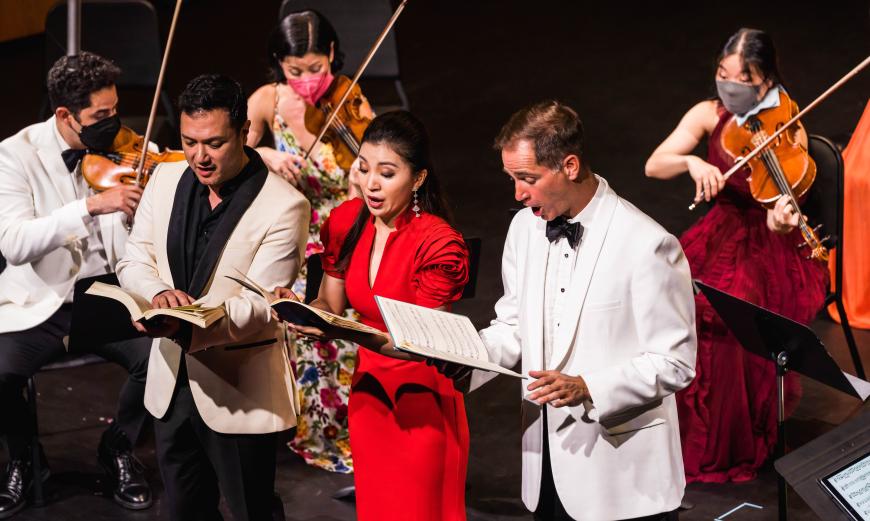
Haydn’s grim tale was paired with Johann Sebastian Bach’s entirely lighthearted “Coffee Cantata.” This operatic scena has three singing parts and five recitative-aria pairs, the arias briefer but more elaborate than Haydn’s. It’s the tale of a young woman (soprano Meigui Zhang, full-voiced and portraying a sly and disingenuous persona) who outwits her stern father (baritone Matthew Worth, flexible in tone and resembling a blustery Steve Martin character) when he tries to ban her from her beloved habit of drinking coffee. A narrator (tenor Nicholas Phan, remarkably clear in his German enunciation) wraps up the story neatly. All three singers were making their first appearances at Menlo. Their work could not have been more charming.
The first concerto on the program was a Cello Concerto in A Major by J.S. Bach’s son, Carl Philipp Emanuel Bach. Saturday’s performance of C.P.E.’s 1753 work leaned toward a period presentation. With a single instrument per part, the orchestra functioned as a Baroque ripieno. Soloist Inbal Segev, also making her first appearance at Menlo, cultivated a dry, gritty, textured tone of a kind often heard in historical performance. She fluently navigated a solo part full of elaborate curlicues in the style of Vivaldi on her 1673 Ruggieri instrument. Also in the Baroque style, Segev played along with the opening tutti, and her solo passages were mostly accompanied by continuo (usually cellist Dmitri Atapine and harpsichordist Hyeyeon Park).
The orchestral music in the outer movements, by contrast, represents an early attempt at the jagged, nervous style that C.P.E. Bach would make his own and which came to be called “Sturm und Drang” (storm and stress) when Haydn took it up in the 1770s. The instruments’ tone was sleeker than Segev’s. Soloist and ensemble traded phrases back and forth at a quick pace, giving great interest and variety to this crisp and vigorous performance.
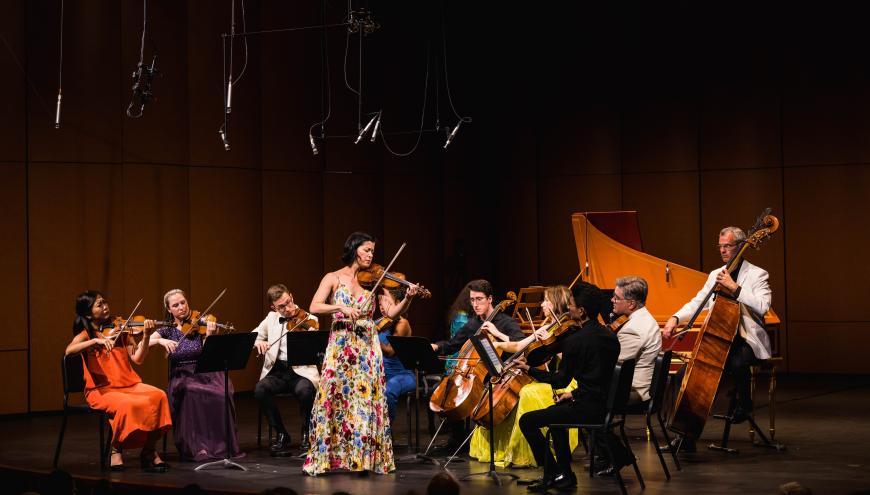
Haydn’s Violin Concerto No. 1 in C Major dates from only about a decade after the C.P.E. Bach work, but it has clearly crossed a line in compositional style. This is a work in the mode of the Mozart violin concertos to come and their 19th-century successors. The solo writing, essayed here dexterously by Jennifer Frautschi in a light-toned but smooth style, includes plenty of double stops and the kinds of bowing and fingering tricks often found in those later concertos. This must also be one of the first solo string concertos to feature the extended and entirely unaccompanied cadenzas that would become typical of the genre. However, Frautschi also played along with some tuttis. The orchestra, with two players per string part, was beefier than the one for C.P.E Bach, to suit the more late-18th-century approach.
The highlight of this concerto was the central Adagio, which consists mostly of a long aria for soloist accompanied by plucked chords from the orchestra evoking a strummed guitar. This was entirely beautiful and was executed by Frautschi with great charm.
The accompanying players in all these pieces consisted mostly of regular Menlo chamber music notables, with even the artistic directors of the festival making appearances, David Finckel as cellist in Arianna and Wu Han as harpsichordist in the Haydn concerto. Soloists Segev and Frautschi each played in the ensemble in the other’s concerto and both performed in the “Coffee Cantata.”
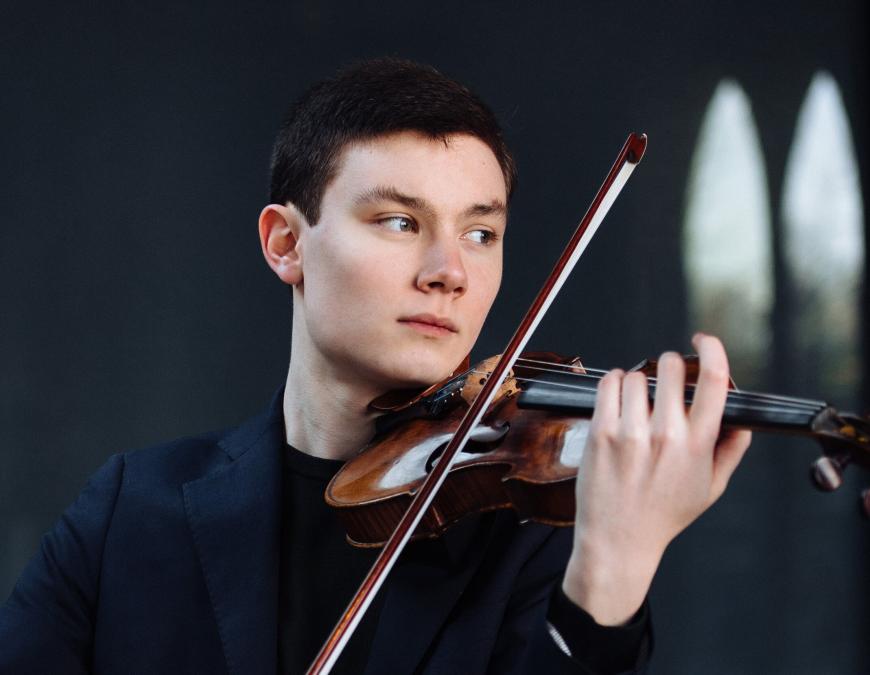
The program was preceded by a prelude concert in the tiny but acoustically vibrant Stent Family Hall on the same campus, featuring young professional artists from the festival’s International Program. This concert featured a grippingly precise and gleaming rendition of Edvard Grieg’s Violin Sonata in C Minor, Op. 45, by violinist Oliver Neubauer — a veteran of Menlo’s Young Performers Program and the son of regular festival violist Paul Neubauer — and pianist Sahun Sam Hong. Other players were equally hearty in Beethoven’s Quartet for Piano and Strings in E-Flat, Op. 16, convincing Saturday’s listeners that this arrangement was superior to the better-known version of the same work for a quintet of piano and winds.


